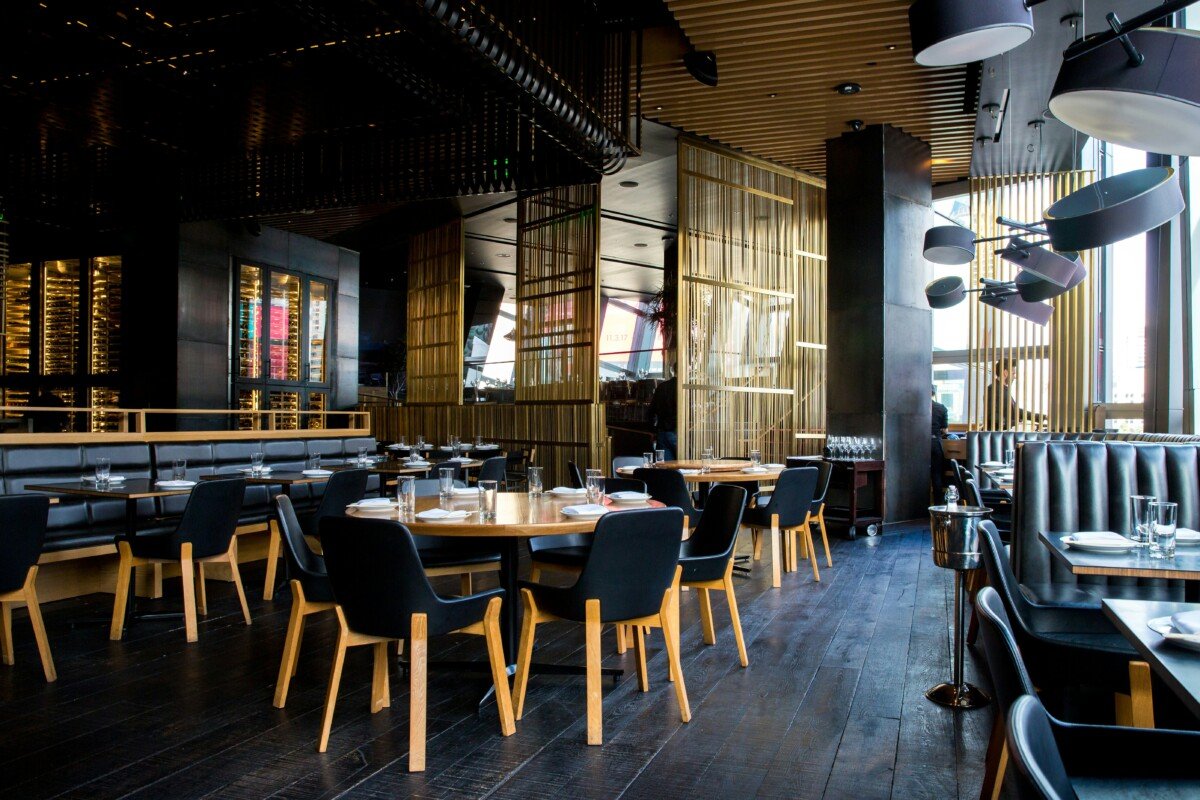Introduction to Jollof Rice
Jollof Rice is a quintessential dish that holds an esteemed place in West African cuisine. Originating from the Senegambian region, this delectable meal traces its roots back to the Wolof people, who were among the first to cultivate this rice-based dish. Jollof Rice has since transcended its origins to become a symbol of cultural pride and national identity across various countries in West Africa.
The basic ingredients of Jollof Rice are surprisingly simple yet yield a rich, flavorful dish. Commonly, it consists of rice, tomatoes, onions, and a blend of spices that vary from region to region. The preparation method involves cooking the rice in a well-seasoned tomato sauce, often accompanied by vegetables, meats, or seafood. This creates a harmonious blend of flavors and textures that make Jollof Rice so beloved.
In Nigeria, Jollof Rice is a staple at social gatherings, from weddings to birthday parties, and is often served with fried plantains and grilled meats. Ghana Jollof Rice, on the other hand, is known for its slightly smoky flavor, achieved by cooking the rice over a wood fire. Sierra Leone Jollof Rice incorporates local spices that give it a distinct tang, while Senegal Jollof Rice, also known as “Thieboudienne,” often includes fish and a variety of vegetables.
Beyond its culinary appeal, Jollof Rice holds a deeper cultural significance. In many West African countries, it is more than just a meal; it is a symbol of unity, community, and heritage. The dish has even sparked friendly rivalries, often referred to as the “Jollof Wars,” with nations like Nigeria, Ghana, and Senegal each claiming to have the best version.
Jollof Rice’s influence extends beyond West Africa. Variations such as Brazilian Jollof Rice and Jamaica Jollof Rice showcase the dish’s adaptability and global appeal. Whether you are in Houston, Texas, or São Tomé, Jollof Rice serves as a delicious reminder of its rich history and cultural significance.
The Contenders: Nigeria vs. Ghana
The culinary rivalry between Nigeria and Ghana over Jollof Rice is a contentious and passionate one, igniting debates across the globe. Both nations boast a rich culinary heritage, and their respective versions of Jollof Rice are often at the heart of this ongoing feud. While the general concept of Jollof Rice remains consistent—rice cooked in a flavorful tomato-based sauce—there are distinct differences in ingredients, preparation techniques, and flavor profiles that set Nigerian Jollof Rice apart from Ghanaian Jollof Rice.
Nigerian Jollof Rice is known for its bold, smoky flavor, often achieved by using parboiled rice and cooking it over high heat, which allows the bottom of the pot to develop a slightly burnt layer known as “party rice.” This version frequently includes a blend of tomatoes, onions, and red bell peppers, with the addition of spices like thyme and curry powder. Renowned Nigerian chef, Tunde Wey, comments, “Nigerian Jollof is all about depth of flavor and that smoky undertone that makes it so unique and unforgettable.”
On the other hand, Ghanaian Jollof Rice typically uses jasmine or basmati rice, which results in a lighter and fluffier texture. The Ghanaian version is characterized by its balanced use of spices, including nutmeg, ginger, and bay leaves, which contribute to its distinct flavor. Ghanaian chef, Selassie Atadika, notes, “Ghanaian Jollof Rice is about harmony and aromatic richness, each ingredient playing its part without overwhelming the others.”
The rivalry extends beyond the kitchen to social media platforms and international food festivals, where enthusiasts from both sides vigorously defend their preferred version. This friendly competition is a testament to the cultural significance and national pride associated with Jollof Rice. Both Nigerian and Ghanaian versions have garnered international acclaim, featuring prominently in Houston Texas Jollof Rice festivals and other global culinary events.
In the end, the Jollof War is not just about the dish itself but the stories, traditions, and identities it represents. Whether one prefers the smoky intensity of Nigerian Jollof Rice or the aromatic subtlety of Ghanaian Jollof Rice, it’s evident that this culinary battle will continue to thrive, fostering a rich dialogue and appreciation for West African cuisine.
Other Variations Across West Africa
While Nigeria and Ghana often dominate the conversation around Jollof Rice, it is essential to recognize that other West African countries also bring their unique flavors and techniques to this beloved dish. Each country offers a distinct take on Jollof Rice, contributing to a rich tapestry of culinary traditions.
Senegal, often credited as the birthplace of Jollof Rice, refers to it as “Ceebu Jën.” This variation is traditionally made with fresh fish, tomatoes, and a host of vegetables like carrots, cabbage, and eggplant. The use of fish stock rather than chicken or beef broth gives Senegal Jollof Rice a unique depth of flavor. Additionally, “Ceebu Jën” often features broken rice, which contrasts with the long-grain rice commonly used in other variations.
Sierra Leone’s Jollof Rice is characterized by its balance of spicy and savory elements. The dish often incorporates smoked fish and a generous amount of Scotch bonnet peppers, lending it a distinct heat. Native vegetables such as cassava leaves and okra are also commonly included, providing a unique texture and taste.
Liberia’s version stands out with its rich use of coconut milk, which adds a creamy texture and a subtly sweet flavor profile. The dish is often cooked with chicken or shrimp and garnished with Liberian hot pepper sauce, giving it a spicy kick that distinguishes it from other variations.
Cameroon’s Jollof Rice often includes crayfish and a combination of green spices such as basil, parsley, and celery. These ingredients imbue the rice with a fresh, aromatic quality. Additionally, Cameroon Jollof Rice is frequently paired with fried plantains or grilled meat, enhancing its overall appeal.
These variations from Senegal, Sierra Leone, Liberia, and Cameroon illustrate the diverse ways in which Jollof Rice is prepared and enjoyed across West Africa. Each version is not only a culinary delight but also an integral part of the cultural and social fabric of its respective country. Through anecdotes and interviews with locals, it becomes evident that Jollof Rice is more than just a meal; it is a celebration of heritage, community, and tradition.
The Global Impact and Future of Jollof Rice
Jollof Rice, once a regional delicacy, has now become a global phenomenon, captivating taste buds far beyond West Africa. This culinary gem, hailing from countries such as Nigeria, Ghana, Sierra Leone, Senegal, and others, has found its way into the hearts and kitchens of people worldwide. The migration of West African communities to Europe, North America, and other global regions has played a pivotal role in the dissemination of Jollof Rice. In cities like Houston, Texas, which boasts a significant West African population, Jollof Rice has become a staple in many households and restaurants, bridging cultural gaps through its rich and savory flavors.
West African immigrants have been instrumental in introducing Jollof Rice to a broader audience. Through community events, cultural festivals, and food markets, the dish has gained immense popularity, often becoming a highlight of international food fairs. The universal appeal of Jollof Rice lies in its versatility and the ability to adapt to local ingredients, making it a perfect candidate for fusion dishes. For instance, Brazilian Jollof Rice might incorporate local spices and seafood, while Jamaican Jollof Rice could feature a hint of jerk seasoning, adding a unique twist to the traditional recipe.
The future of Jollof Rice looks promising as it continues to evolve with changing culinary trends. Chefs and home cooks alike are experimenting with new ingredients and cooking techniques, ensuring that the dish remains relevant and exciting. The rise of social media and food bloggers has further amplified the global reach of Jollof Rice. Platforms like Instagram, YouTube, and TikTok are teeming with vibrant posts and videos showcasing different variations of Jollof Rice, from Nigeria Jollof Rice to Kenya Jollof Rice, sparking interest and encouraging culinary exploration among diverse audiences.
In conclusion, Jollof Rice’s journey from a West African staple to a global culinary icon is a testament to its enduring appeal and adaptability. As it continues to inspire and delight food enthusiasts around the world, the future holds endless possibilities for this beloved dish.












